What is Syphilis?
Syphilis is a sexually contacted disease which is caused due to the bacteria Treponema Pallidum which is also a spirochete (which means a group of spiral-shaped bacteria).
In early stages, Syphilis causes painless sore typically on the genitals, rectum or mouth. During its different stages, its different signs can also be seen on the body (genitals, mouth. tongue etc) . If left untreated the syphilis can severely damage the heart, brain or other organs, and can be life-threatening.
Note: Besides sexual contact, the Syphilis can also be spread from infected mother to child. This is known as Congenital Syphilis
Syphilis Tongue

Even though the sores usually last about 3 to 6 weeks and then go away on their own. Still Syphilis, during every of its stages shows signs on the tongue. We can observe the tongue and gauge the stage of syphilis.
Our tongue is probably the most responsive organ of the body. When something goes wrong it tells us through a bunch of signs and signals. Syphilis is no exception either, during its different stages, syphilis appears on the tongue.
All we need is to be smart enough to understand those signals. Although if not acted upon these seemingly small issues can give rise to chronic health problems as syphilis on the tongue is highly contagious.
There are three stage of Syphilis a) Primary Syphilis b) Secondary Syphilis 3) Tertiary Syphilis or Latent stage of Syphilis all of which can be identified by observing the tongue. This observation is based on the condition, texture and pattern appearing on the tongue, so lets begin.
1.Primary Syphilis symptoms on the tongue
Syphilis on the tongue in the early stage has been seen in the form of intra-oral chancre. During Primary stage syphilis may appear as sores, known as chancres on the tongue.

As seen in the picture above, the intra-oral chancre is present on the tongue. The intra-oral chancre as seen is an ulcerated lesion which is covered with grayish white membrane and it is painful.
The secondary infection (secondary infection, not secondary syphilis) may occur in this intra-oral chancre(refer the third image above).
2.Secondary Syphilis stage or Metastatic stage symptoms on the tongue
This stage starts 6 weeks after the healing of the primary lesion. In this stage diffuse eruptions appear on the skin and mucous membrane.
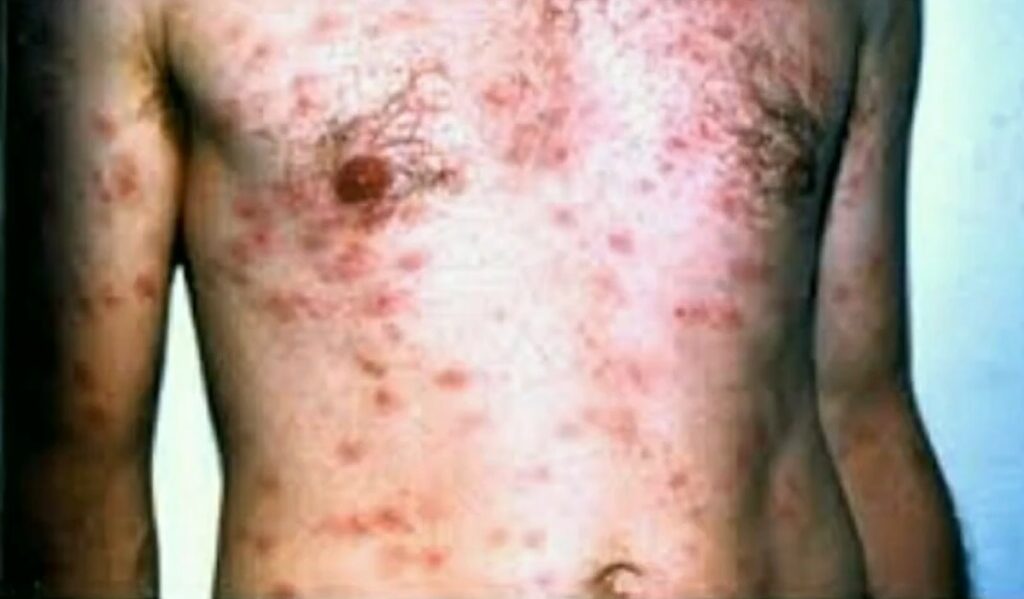
As seen in the above picture these lesions are multiple macules and papules can be seen. This is infamously referred to as Syphilis rash appearing on the torso.
Oral lesions of the secondary syphilis are called mucous patches. These mucous patches are multiple painless, grayish white plaques over an ulcerated surface.
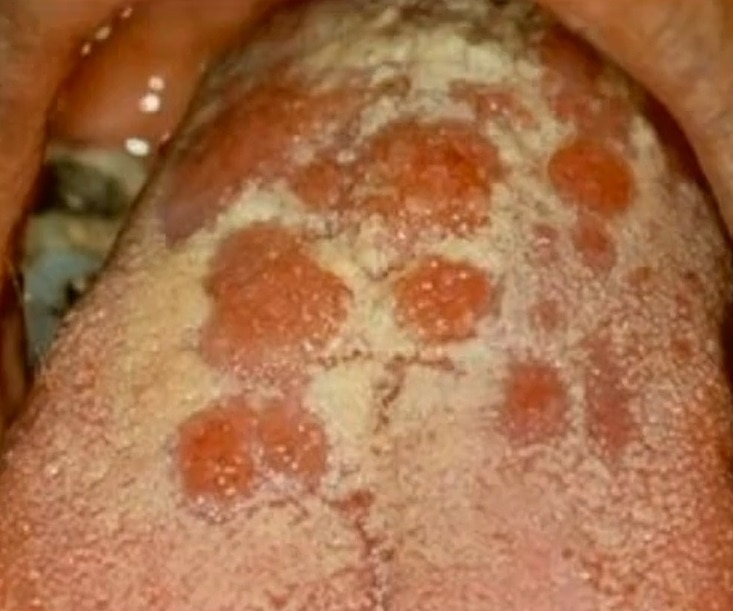
As you can see in the image above the mucous patch in the tongue, they are also known as snail track ulcers because of their appearance and numbers (imitating a snail tack). These ulcers are ovoid or irregular with an erythematous zone which means exhibiting abnormal redness of the skin or mucous membranes.
These mucous patches in the secondary stage of the syphilis are highly infective because they have a high load of organisms in them.
So during this stage any oral sex or even kissing an infected person can spread syphilis.
Note: Besides tongue, mucous patches may also occur on gingiva and buccal mucosa.
Also See: Pictures of Syphilis & other STD’s appearing on different parts of the body
3.Tertiary Syphilis or Latent stage of Syphilis symptoms on the Tongue
This stage occurs after several years after the primary stage. This is the most critical stage affecting the Cardiovascular system (CVS), Central Nervous System (CNS) and certain organs and tissues. Surprisingly, this is literally the non-infectious stage of Syphilis.
The characteristic lesion of tertiary syphilis is called “Gumma”. This Gumma lesion is believed to be the hypersensitivity reaction occurring to the person coming in contact with the infected person.
Besides oral (tongue or palate), this Gumma may appear on Skin, Liver, Bone and on mucus membrane.
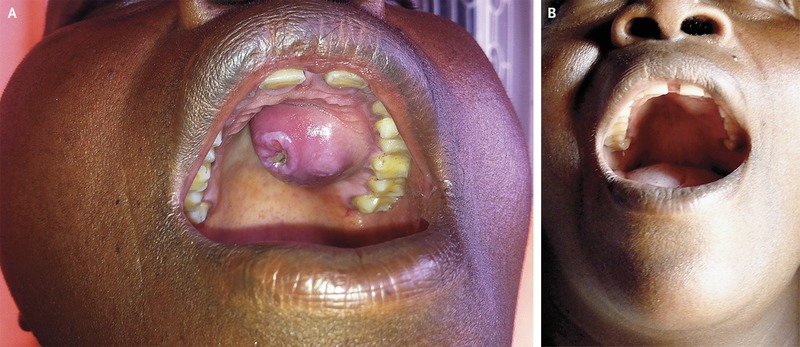
So the intra-oral gumma may occur on the tongue and palate (seen above a round gumma on the palate). In this stage, a nodular mass may occur which proceeds to a deep painful ulcer.
Atrophic or Interstitial glossitis occurs during this stage. This means when the small doorknob-like projections on the tongue, called papillae, are worn away due to a process called endarteritis obliteration of the blood vessels, which are characterized by inflammation and thrombosis of small and medium arteries.
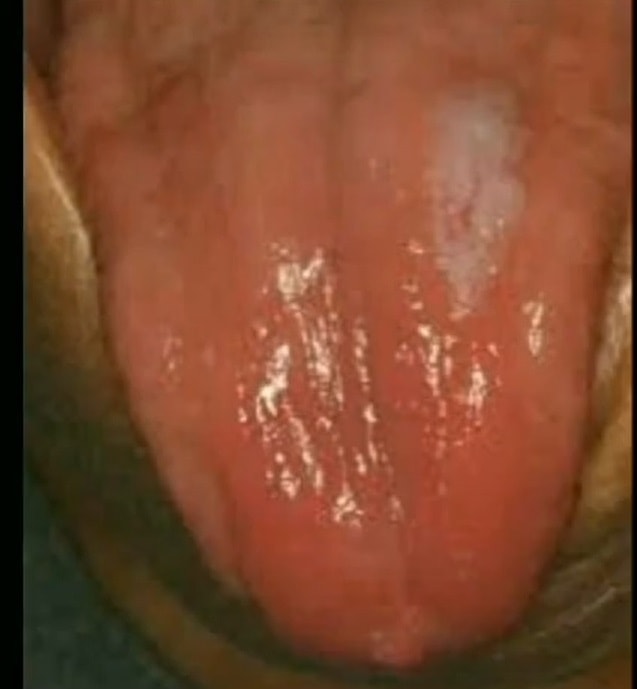
So here you can see the interstitial glossitis (which means soreness of the tongue, or more usually inflammation) seen on the tongue during the tertiary stage of the syphilis.
Another type of symptoms observed on the tongue during tertiary stage is syphilitic glossitis.
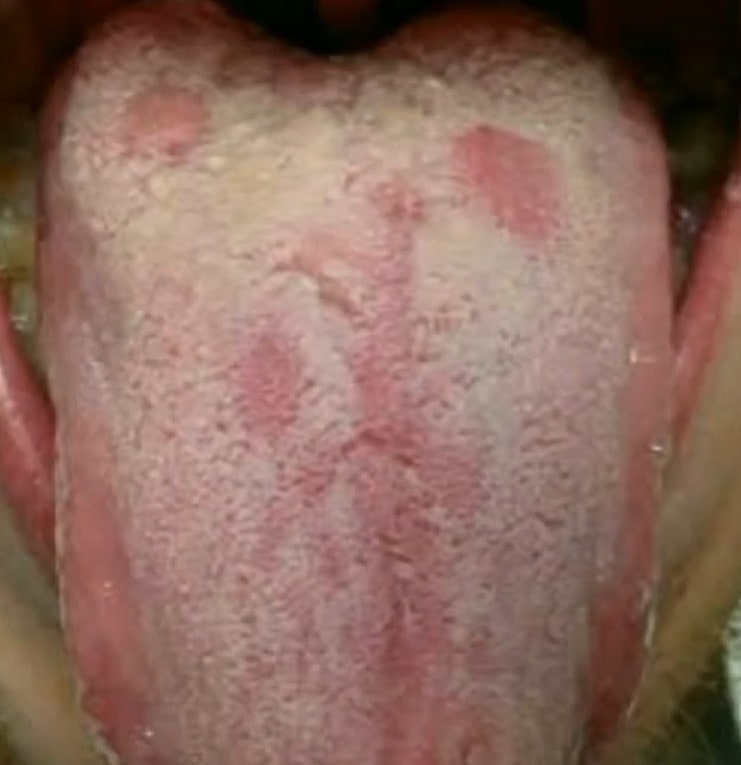
As seen in the image above, the syphilitic glossitis occurring on the tongue causes fissuring of the tongue (round red patches between white), atrophy and fibrosis of the tongue musculature and hyperkeratosis.
Also check: Symptoms of Gonorrhea too appears orally and are similar to that of Syphilis
Syphilis Tongue: Treatment
Syphilis on tongue can be treated with similar medicines to that of the oral syphilis.
The antibiotic benzathine penicillin G is used to treat syphilis tongue.
One injection of this antibiotic during the Primary and Secondary stage of the syphilis.
Multiple injections depending on the condition during Tertiary stage of Syphilis.
Syphilis, at its initial stage can be treated easily and doesn’t cause much pain or trouble. However, it is necessary to identify and immediately start the treatment before things go out of hand and create more harm.
One of the thing to protect yourself is to get tested for STD regularly, especially if you are sexually active or have multiple sexual partners. Prevention is always better than cure. STD testing these days are economical you can get $10 discount coupon so the Syphilis testing can be done for as low as $39.
References
Syphilitic Gumma Image: https://www.nejm.org/doi/full/10.1056/nejmicm1313142 Syphilis research data, table No 2, row 3, line 44 Epidemiological study of Syphilis: https://pubmed.ncbi.nlm.nih.gov/33656756/


